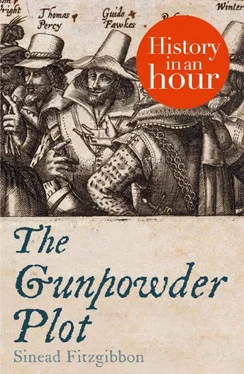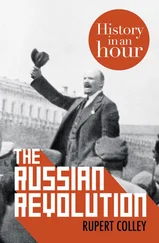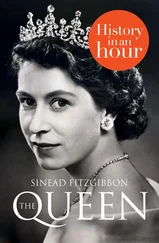But the euphoria was short-lived. When he realized that his over-extended Treasury was heavily reliant on income from recusant fines, the King quickly re-instated them. Following this, James made a speech outlining his distaste of the superstitious Catholic faith. It had become clear that James was disinclined to leniency on the Catholic question, and the hopes of many were disappointed. Now, tensions which had long been simmering bubbled to the surface. A group of provincial Catholic noblemen decided the time had come to end this State-sponsored persecution and to take a stand against their oppressors.
The Conspirators
Perhaps unsurprisingly, given the secretive nature of their endeavour, the noblemen involved in the ill-fated Gunpowder Treason were initially few in number – in fact, only five men were privy to the initial planning stages of the scheme, a number which would increase to thirteen by the time the Plot reached its dramatic conclusion. The majority of those implicated were related, through blood or by marriage, to the most prominent Catholic families in England – the clans of Throckmorton, Vaux and Monteagle. They were a tight-knit group of brothers, cousins and close friends who were united against a common enemy, each harbouring a deep-seated sense of injustice at the loss of their religious freedoms.
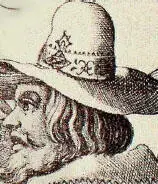
Robert Catesby
The ringleader of this band of brothers (and principal architect of the Gunpowder Plot) was a man named Robert Catesby. The only surviving son of Sir William Catesby, a notorious recusant, and his wife Anne Throckmorton, Robert had a high Catholic pedigree. He also had first-hand experience of the suffering and hardship caused by Elizabeth’s stringent recusancy laws. From a very young age, he had witnessed his father’s frequent imprisonments for his refusal to submit to the new religious convention. He also saw his family’s fortune dwindle as a result of the heavy fines levied on them. These early experiences heavily affected the young man, who would bitterly resent Protestant authority for the rest of his life.
Catesby’s religious proclivities were well known to the authorities, as were his rebellious inclinations. When Elizabeth I fell ill in 1596, Catesby was rounded up and imprisoned, along with other prominent recusants (some of whom would go on to become involved with the Gunpowder Plot). This was to prevent Catholic dissenters from taking advantage of the Queen’s sickness to mount a rebellion. He was released upon the Queen’s return to health.
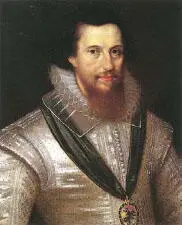
2nd Earl of Essex, Robert Devereux
The full extent of Catesby’s subversive inclinations first manifested themselves in 1601 when he became embroiled in the Essex Rebellion. The uprising was a failed attempt to overthrow Queen Elizabeth’s council of advisers, spearheaded by the 2 ndEarl of Essex, Robert Devereux. Essex, an erstwhile favourite of Elizabeth, had recently fallen out of favour at court, and his rebellion was a desperate attempt to re-establish himself in a position of authority. The scheme was ill-conceived, and never seemed likely to succeed.
However, the recklessness of the endeavour did not deter Catesby. He willingly threw his lot in with the insurrectionist in the hope that, if successful, Essex would work towards improving conditions for the Catholic minority. The role Catesby played in the uprising is unclear, although it is safe to say that it was relatively minor, given he escaped with his life. Essex was not so lucky – he was found guilty of treason and executed. Catesby was fined a substantial sum for his part in the rebellion, which forced him to sell some of his property, namely his estate at Chastleton in Oxfordshire. Unchastened by his experience in Essex’s rebellion, it soon became clear that its failure had done nothing whatsoever to assuage his revolutionary aspirations.
A handsome and charismatic man, Catesby was well liked and inspired intense loyalty among his friends. He also held considerable sway over his extensive family, a fact he often exploited to maximum effect – many of those who became involved in the Gunpowder Plot did so out of a misguided personal loyalty. Thanks to his mother’s familial connections, Catesby’s far-reaching recusant kinship produced a complex network of cousins from whose ranks he would recruit his co-conspirators.
Among those who had the misfortune to fall under Catesby’s spell and thus found themselves implicated in the Gunpowder Plot were Catesby’s first cousin and childhood friend, Francis Tresham; brothers Robert and Thomas Wintour (also cousins of Robert Catesby), and their brother-in-law, John Grant. Others who proved themselves fatally susceptible to Catesby’s charm were Jack and Christopher Wright, together with their brother-in-law Thomas Percy. Ambrose Rookwood, Sir Everard Digby and Robert Keyes were also devotees who would be only too willing to foolishly follow their seditious leader down a path to self-destruction. Catesby’s faithful servant, Thomas Bates, was yet another who found himself mixed up in the deadly scheme by virtue of his unfailing loyalty to his charismatic master.
Guy Fawkes
But perhaps the most famous of the conspirators, and the name which has become synonymous with the legend of the Gunpowder Plot, is Guy Fawkes. Although Fawkes was involved with the Plot from its inception, it was not him, but Catesby, who was the chief instigator of the conspiracy. In fact, Fawkes was an outsider among the scions of English recusant families – his only connection to the group being the fact that he attended school with Jack and Christopher Wright as a young boy.
From the very beginning, it was clear to Catesby that if his scheme were to succeed, he would need a man with a working knowledge of gunpowder to join his close-knit circle. Guy Fawkes was an obvious choice. He had spent twelve years as a mercenary soldier in the Catholic King of Spain’s Army of Flanders, fighting against Protestant insurgencies. It was during these religious wars on the Continent that Fawkes had gained extensive gunpowder expertise. He had also acquired a reputation for being a devoted Catholic of dependable character, attributes which convinced Catesby that Fawkes was the right man for the job. Tom Wintour was despatched to Flanders under orders to secure the soldier’s co-operation. Much to Catesby’s relief, Guido Fawkes (as he was then known) proved to be a willing recruit – he landed in England in April 1604, ready to take up the Catholic cause.
The Hatching of a Plot
Tom Wintour was the first of the conspirators to learn of Robert Catesby’s intention to mount a rebellion against the Protestant establishment. It is likely that he was made aware of the scheme sometime during the early months of 1604. He could have been in no doubt as to his cousin’s objectives when he travelled to Flanders in April to recruit Fawkes on Catesby’s behalf. Unsurprisingly, Wintour initially baulked at the very suggestion of such a dangerous and destructive scheme. He argued, quite sensibly, that if the uprising failed in its objective, it would result in an exacerbation of an already fraught situation, and quite possibly set the Catholic cause back by many years. His logic was quickly discounted by Catesby, who declared that ‘the nature of the disease requires so sharp a remedy’. In a bid to dispel Wintour’s doubts, Catesby launched into an impassioned defence of his deadly scheme, declaring Parliament to be a legitimate target in the fight to end Catholic persecution. ‘In that place’, he said, ‘they have done us all the mischief’.
Читать дальше
